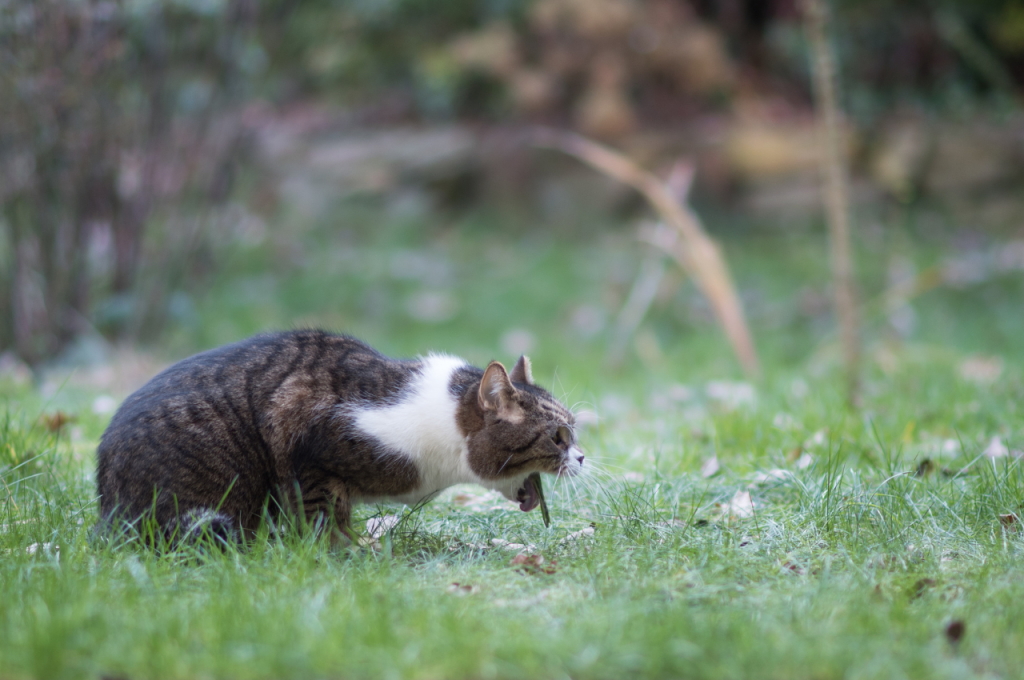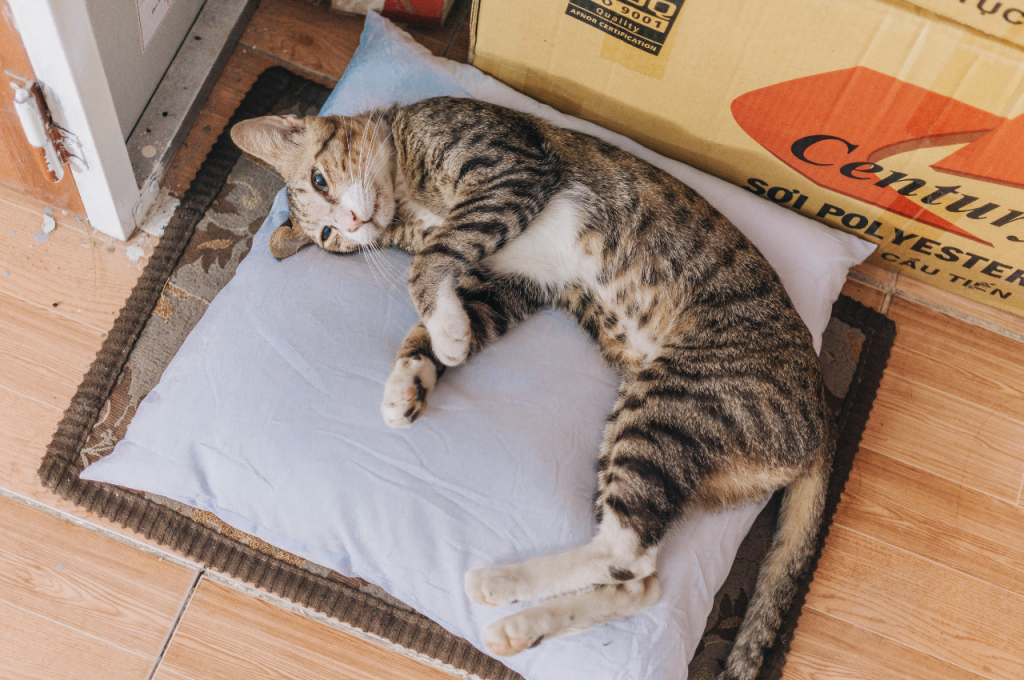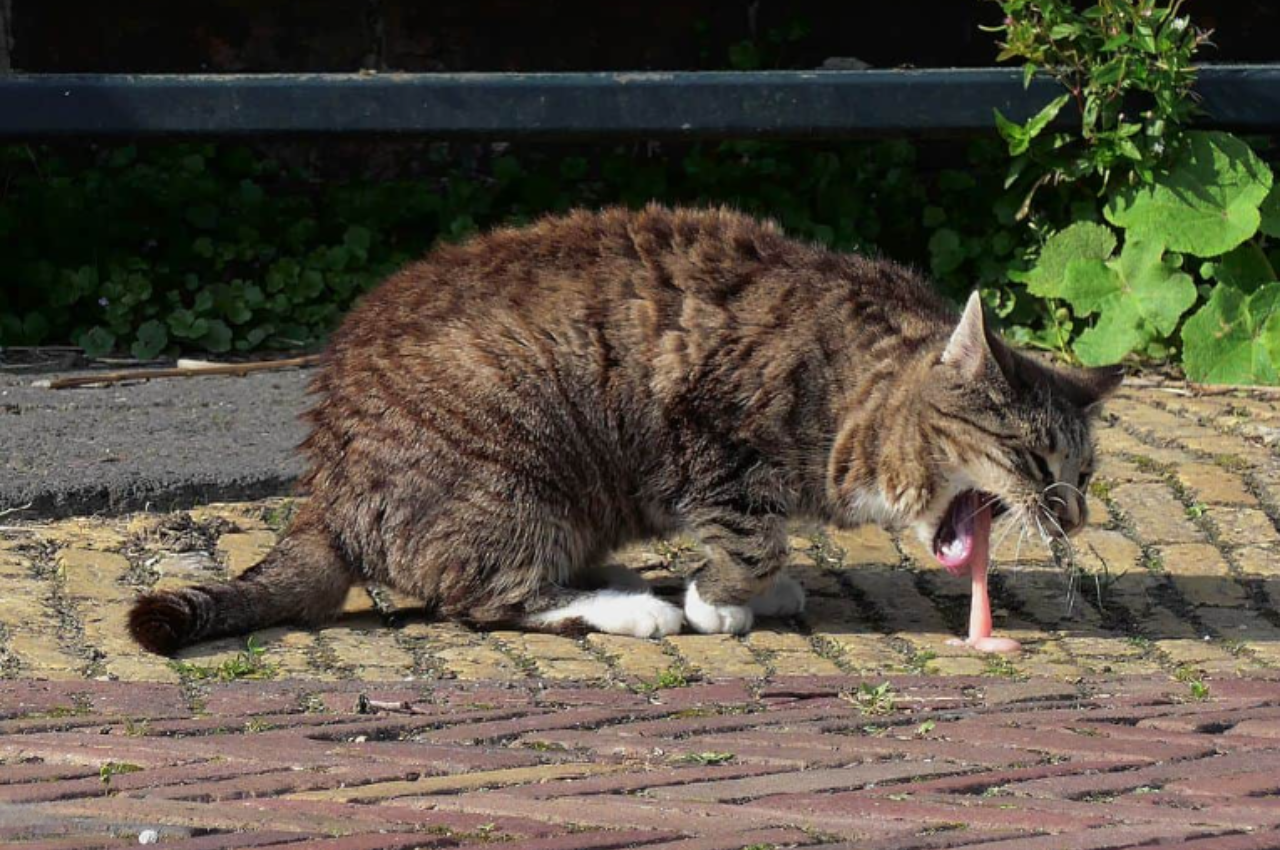Cats may throw up because of various reasons like overeating, hairballs, and gastrointestinal problems. It’s important to monitor your cat’s behavior and seek veterinary care if the vomiting becomes excessive or accompanied by other symptoms.
As a pet owner, it can be concerning to witness your furry friend throwing up. While occasional vomiting is normal for cats, it’s essential to understand the underlying causes behind their behavior. One common reason for vomiting is overeating, especially if your cat is consuming its food too quickly.
Hairballs are also a frequent issue among cats, as they groom themselves and ingest a lot of hair. However, vomiting can also indicate a digestive issue or a broader health problem. Therefore, it’s crucial to identify the symptoms that accompany vomiting, like lethargy, diarrhea, and loss of appetite, and seek veterinary attention if necessary.
Different Types of Vomiting in Cats
Different Types of Vomiting in Cats can be a sign of a minor or a serious health issue. As a responsible owner, it’s essential to differentiate between different types of vomiting in cats to take prompt action. In this post, we’ll dive into the common types of vomiting in cats.

Hairballs
Hairballs are a common type of vomiting in cats, and it’s natural if your cat vomits a hairball once in a while. Cats tend to groom themselves, which can result in their digestive system accumulating hairballs. The hairball can cause your cat to gag and vomit. It can look like a tubular mass of hair with some food and yellow bile present. If you notice that your cat has been frequently vomiting hairballs, it’s best to consult your veterinarian.
Food Related Vomiting
Cats can be picky eaters and can develop food-related vomiting if they eat something that doesn’t suit their digestive system. This type of vomiting can occur immediately after eating or even after a few hours. The vomit might contain undigested food and mucus. It’s essential to note any changes in your cat’s diet or if they have eaten something irregular. Consult the veterinarian to rule out any underlying illness due to the vomiting.
Foreign Bodies
Cats are curious creatures, and they tend to play with items that can be hazardous to their health, like strings, rubber bands, or even coins. They might accidentally swallow these objects, leading to vomiting. Foreign bodies can cause intestinal blockages, which can lead to serious health issues if not addressed promptly. If you notice any red flag symptoms, such as lethargy, lack of appetite, or abdominal pain, call your veterinarian immediately.
Organ Failure
Vomiting can be a sign of serious health concerns such as organ failure in cats. When a cat has liver or kidney disease, it can result in the accumulation of toxins in the system, which can lead to vomiting. The vomit might have a foam-like texture with a yellowish tint. It’s crucial to note any changes in your cat’s behavior or weight loss and immediately schedule an appointment with the veterinarian. Early detection can save your cat’s life.
Signs and Symptoms to Watch Out For
If your furry feline friend is vomiting frequently, it may indicate an underlying medical issue. Watch out for signs such as lethargy, loss of appetite, or diarrhea. Seek veterinary advice to determine the root cause and receive appropriate treatment.
Cats are adorable pets that we often consider as a part of our family. However, when our feline friends start throwing up, it could be a clear sign that something is wrong. As pet owners, we must understand the potential reasons behind this behavior so we can take adequate measures to ensure the health and safety of our feline friends. In this article, we will focus on the signs and symptoms to watch out for when your cat is throwing up.
Frequent Vomiting
When your cat is vomiting frequently, it may indicate a severe underlying problem. Thus, it should be a cause for concern. There are different reasons why your cat may be vomiting more frequently than usual, including:
- Presence of hairballs
- Ingestion of foreign objects
- Dietary changes or intolerances
- Diseases of the liver, pancreas, or kidneys
- Parasites
If the vomiting continues for more than two days, you must seek veterinary help immediately to ensure your cat’s safety.
Change in Appetite
Another sign to watch out for when your cat is throwing up is a change in appetite. Cats are generally finicky eaters, and a loss of appetite could indicate illness or a digestive problem. If your cat is consistently turning away from their food or water, consult your vet immediately.
Dehydration
Frequent throwing up often leads to dehydration, a severe health condition in cats. To check your cat’s hydration level, perform a skin test. With your finger, gently lift the skin on the back of your cat’s neck, and then release. The skin should immediately go back to its original position. If it takes time for the skin to return to its initial state, your cat is likely dehydrated. In such a condition, you must give your cat plenty of fluids, and if necessary, visit a vet for treatment.
Lethargy
If your cat is throwing up and also displaying symptoms of lethargy, it may indicate a severe health issue. Signs of lethargy include reduced activity levels, sleeping constantly, and excessive fatigue. Lethargy is a warning sign that something may be seriously wrong with your feline friend. In such a situation, you should take your cat to a vet for diagnosis and treatment.
Diagnosing the Cause of Vomiting
Cats may vomit due to various reasons such as eating too fast, hairballs, or underlying medical issues. Diagnosing the cause of vomiting requires careful observation, vet consultation, and potential diagnostic tests to provide proper treatment.

Vomiting is a common symptom in cats, and diagnosing the cause of vomiting can be challenging. As a pet owner, you should be aware of the possible causes of vomiting in cats and seek veterinary attention if you observe any unusual vomiting behavior in your furry friend.
Physical Examination
During the physical examination, the veterinarian will examine your cat’s body for any signs of illness, such as dehydration or jaundice. They will assess the cat’s vital parameters such as heart rate, respiration rate, and temperature. They will also examine your cat’s abdomen, palpating internal organs to identify if any changes or anomalies exist. The veterinarian will ask you about your cat’s history of vomiting, duration, frequency, and other symptoms like lethargy or diarrhea.
Blood Tests
Blood tests can help diagnose vomiting’s possible causes in cats. For example, an elevated white blood count could suggest a bacterial infection. Evaluating liver and kidney function tests can also help identify problems like hepatitis or kidney disease. Additionally, blood tests can identify if there is an electrolyte imbalance in your cat that may be causing vomiting.
X-rays or Ultrasounds
X-ray and ultrasound tests are useful diagnostic tools for identifying problems in the abdominal area. X-rays will show any hard objects, foreign bodies with significant contrast, or any obvious gastrointestinal abnormalities related to the digestive system. On the other side, ultrasound technology produces high-frequency sound waves that help visualize abdominal organs’ structure, size, and texture. The veterinarian may choose either X-rays or ultrasound, depending on the situation.
Endoscopy
Endoscopy comprises a flexible tube with an attached camera that the veterinarian inserts into the cat’s gastrointestinal tract through the mouth. This process allows the veterinarian to see the inside of a cat’s digestive system, and evaluate any inflammation, injury, or obstructions in the gastrointestinal tract. Endoscopy is beneficial for diagnosing conditions such as gastritis or gastrointestinal inflammation.
Treatment Options
When a cat throws up, it is essential to treat the underlying cause of the vomiting to prevent further complications. The treatment approach depends on the cause and severity of the vomiting. Below are some treatment options:
Intravenous Fluids
Intravenous (IV) fluids are essential for cats that have been vomiting persistently and have lost fluid and electrolytes in the process. IV fluids help to rehydrate the cat and restore electrolyte balance, ensuring that the cat recovers faster. This treatment approach is also beneficial for cats who are unable to eat or drink due to vomiting.
Dietary Changes
Cats that have been vomiting due to a dietary issue can benefit from dietary changes. This treatment approach involves switching the cat to a new diet that does not trigger vomiting. The new diet should be of high quality, easy to digest, and free of allergens or other components that may cause vomiting. Additionally, homeowners should avoid feeding their cats table scraps or human food, as these can trigger vomiting.
Medication
Medication is a suitable treatment approach for cats that have been vomiting due to specific health issues such as kidney disease or inflammatory bowel disease. In such cases, the vet may prescribe medication such as corticosteroids, antibiotics, or anti-emetics to manage the underlying condition and alleviate vomiting symptoms.
Surgery
In rare cases, cats may require surgery to treat the underlying cause of vomiting. For instance, if the cat has ingested a foreign object that is causing the vomiting, the vet may perform surgery to remove the object. Similarly, if the cat has a tumor or other growth in its digestive tract, the vet may recommend surgery to remove it.
Preventative Measures to Keep Your Cat Healthy
Want to keep your cat healthy? Identify the reasons behind your cat throwing up and opt for preventative measures. Consult a vet, introduce a balanced diet and grooming routine, and prevent exposure to toxins.

Regular Vet Check-Ups: Regular veterinary check-ups are crucial in preventing numerous cat health issues, including vomiting. This not only helps you catch any underlying health problems early but also ensures your cat’s vaccinations are up-to-date. Ensure that you book an appointment with your vet regularly and follow their recommendations.
Proper Nutrition: Feeding your cat with a properly balanced diet is key to its overall health. Ensure that your cat’s food is rich in all the necessary nutrients it needs. Avoid feeding your cat foods that it may be allergic to or that contain foreign substances like dairy or meat by-products.
Hydration: Dehydration is one of the primary reasons why cats vomit. Make sure that clean, fresh water is always accessible to your cat so that it can stay well hydrated. If your cat is not drinking enough water, consider adding some broth to its food to encourage it to drink more.
Preventing Ingestion of Foreign Bodies: Cats are curious creatures and it can be challenging to keep them away from anything that seems intriguing. Ensure that you keep small objects, poisonous substances, and stimulating foods away from your cat’s reach. Keep an eye on your cat when it’s outside to ensure it doesn’t consume something that could be toxic. This can help prevent vomiting episodes that occur as a result of foreign body ingestion.
Taking care of your cat’s health can be a massive task, but the above preventative measures are simple and effective steps you can take to ensure your cat remains healthy, energetic, and happy. Proper nutrition, hydration, regular vet check-ups, and preventing ingestion of foreign bodies can go a long way in preventing vomiting episodes in your cat.
Conclusion
Vomiting is a common issue among cats, and it could indicate a serious underlying health problem that requires immediate attention. As a responsible cat owner, it’s essential to keep an eye on your feline friend’s eating habits and monitor any unusual behavior carefully.
Consider taking your furry companion to the vet to get a proper diagnosis and treatment plan for a healthier and happier life together. By being attentive and proactive, you can help your cat to live a long, healthy, and happy life.
